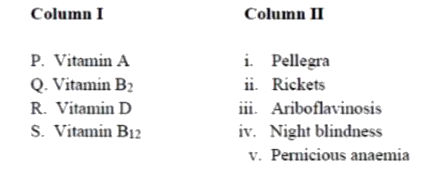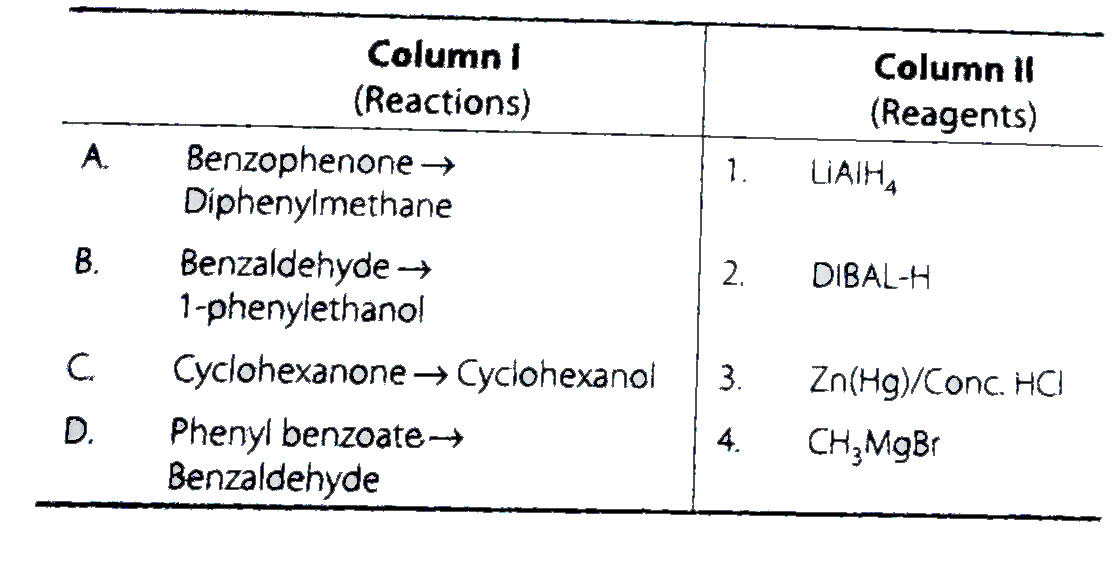Match the vitamins given in Column I with the deficiency disease they cause given in Column II.

(a) - (iii), (vi), (b) - (vii), (c ) - (i), (d) - (viii), (e) - (iv), (f) - (v), (g) - (ii)
Topper's Solved these Questions
- BIOMOLECULESBOOK - MODERN PUBLICATIONCHAPTER - BIOMOLECULESEXERCISE - NCERT (EXemplar Problems) (Assertion and Reason Type Questions)
6 Videos
- BIOMOLECULESBOOK - MODERN PUBLICATIONCHAPTER - BIOMOLECULESEXERCISE - QUICK MEMORY TEST (Accelerate your potential for Objective Questions)(A. Say True of False)
15 Videos
- BIOMOLECULESBOOK - MODERN PUBLICATIONCHAPTER - BIOMOLECULESEXERCISE - NCERT (EXemplar Problems) (Short Answer Type Questions)
29 Videos
- ALDEHYDES ,KETONES AND CARBOXYLIC ACIDSBOOK - MODERN PUBLICATIONCHAPTER - ALDEHYDES ,KETONES AND CARBOXYLIC ACIDSEXERCISE - UNIT PRACTICE TEST
13 Videos
- CHEMISTRY IN EVERYDAY LIFE BOOK - MODERN PUBLICATIONCHAPTER - CHEMISTRY IN EVERYDAY LIFE EXERCISE - UNIT PRACTICE TEST
13 Videos
Similar Questions
Match the vitamins given in column I with the deficiency disease caused by it given in column II and mark the appropriate choice

View SolutionMatch the vitamins given in column I with the deficiency disease caused by it given in column II and mark the appropriate choice

View SolutionMatch the hormones given in Column A with their deficiency disease given in Column B

View SolutionMatch the statements given in Column I with the oxidation states given in Column II.

View SolutionMatch the statements given in Column I with the oxidation states given in Column II.

View SolutionMatch the vitamins listed in Column I with the diseases caused due to their deficiency in Column II.

Choose the CORRECT combination
View SolutionMatch the items given in Column I and Column II.

View SolutionMatch the items given in Column I and Column II.
View SolutionMatch the reactions given in Column I with the suitable reagents given in Column II.

View SolutionMatch the reactions given in Column I with the suitable reagents given in Column II.

View Solution
